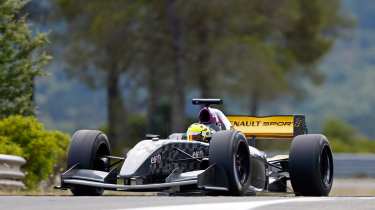How racing tyres are different from road tyres
Michelin's Jamie McWhir explains why road and race compounds are so different
Racing tyres are purposefully designed for one job and one job only: they aim to offer the maximum amount of grip in a specific track situation, whether accelerating, braking or cornering. Road tyres, on the other hand, have a multitude of tasks and constraints they have to respond to.
‘A racing tyre tends to be much more peaky’, says Jamie McWhir, Technical Manager at Michelin UK. ‘Imagine a graph with slip angle on the X-axis and grip potential on the Y-axis: a racing tyre will offer more grip than a road tyre, but will provide that over a narrower band of slip. A lot of that is due to the materials used in their construction. Essentially, you know that racing tyres are going to be driven in a certain manner, on a certain car, so you can design them accordingly.’
A racing driver is an expert at getting the best out of his tyres in any given situation on the track, and is experienced at dealing with a loss of grip. In addition, they’re using the tyres in a safety-controlled environment, so the handling properties of the tyres can be pushed to the limit.
Road tyres need to work on hundreds of different cars, for millions of different drivers – all of different abilities, in different conditions with varying weather and multiple types of road surfaces. Michelin strives to make the most progressive tyre on the market: the engineers are looking for grip levels to reduce gradually when the limit is reached, not suddenly like a racing tyre.
Nevertheless, high performance cars often have tyres designed specifically for them, or at the very least a range of tyres approved for the car. This is the difference between ‘a bespoke suit and one off the peg’, notes Jamie. ‘The bespoke suit will always fit you better, and it’s the same with a tyre.’ The higher the performance of the car, the more important it is that the tyre has been developed specifically for it.







